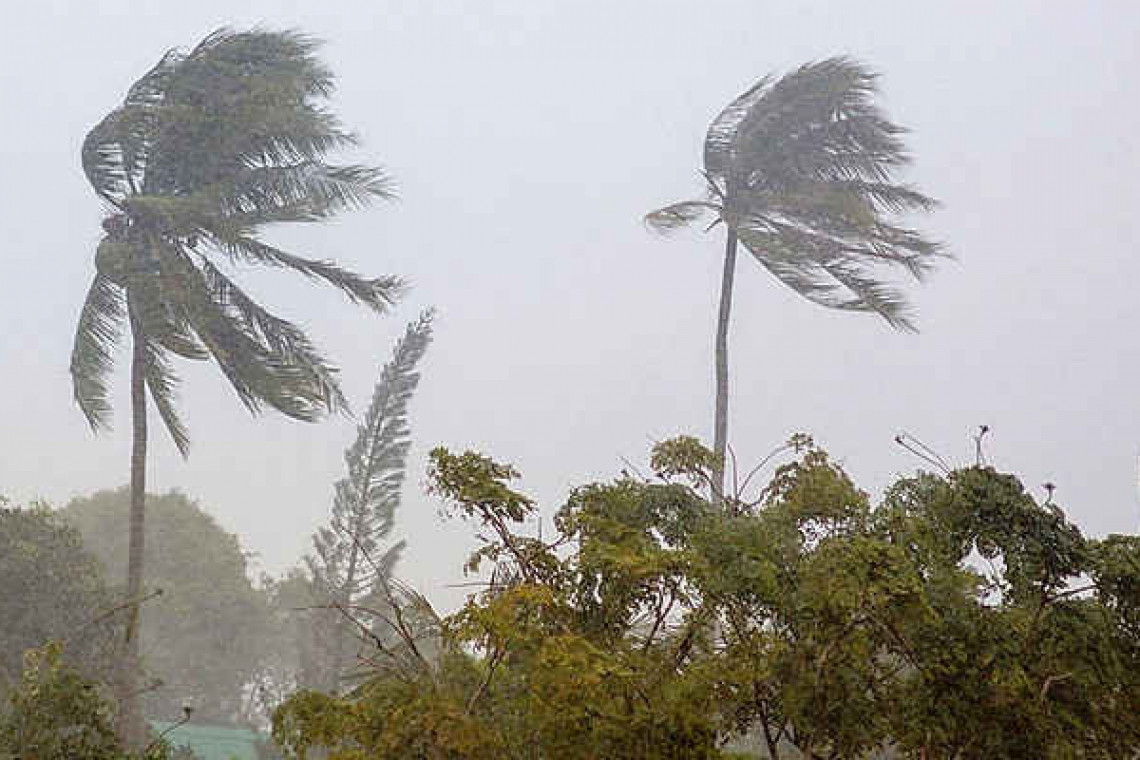Palm trees blowing in hurricane-force winds.
WASHINGTON, DC--Pan American Health Organization (PAHO) Director Carissa F. Etienne called on Tuesday, on national and local authorities in countries at risk for hurricanes to prepare for the 2021 hurricane season. She warned that COVID-19 and the potential devastation of high winds and flooding make preparation even more critical than usual.
“We must safeguard our countries and territories against the dual threat of COVID-19 and the hurricane season,” Dr. Etienne said. “We must ensure that health services are fully operational to save lives and protect the well-being of populations before, during and after hurricanes. We must also make sure that emergency care, hospitalisation, [Intensive Care Unit – Ed.] ICU beds, laboratories and quarantine and isolation centres are protected and functional.”
June 1 marked the start of the Atlantic hurricane season, which is forecast to have a 60 per cent chance of above-normal activity, according to the US National Oceanic and Atmospheric Administration (NOAA). The forecast is for 13 to 20 named storms, including six to 10 hurricanes and three to five major hurricanes.
PAHO is working to provide emergency supplies and assist in securing critical facilities in countries in Latin America and the Caribbean.
PAHO will hold a preparedness meeting on June 10 with representatives from the disaster coordination agencies of all countries in the Americas. The online meeting to identify resources and adjust preparedness and readiness plans will include panellists from the World Meteorological Organization (WMO), NOAA’s National Hurricane Center, the Coordination Center for Natural Disaster Prevention in Central America (CEPREDENAC, per its Spanish initials) and the Ministry of Health of Guatemala.
On May 20 and 21, PAHO met with disaster management officials from seven Central American countries and the Dominican Republic to analyse the main disaster risk-reduction needs.
Dr. Etienne urged officials, particularly those in the Caribbean, Central America, Mexico and northern South America, to update national hurricane response plans and conduct simulation exercises. She said countries should refine evacuation plans, taking into consideration additional measures for physical distancing and extra hygiene and sanitation in shelters. She urged countries to strengthen healthcare services by ensuring that surge staff and essential supplies and protective equipment will be readily available when needed.
These measures and actions are especially important for countries and territories still suffering the consequences of the highly destructive 2020 hurricane season.
“Hurricanes Eta and Iota in 2020 affected 9.9 million people and did considerable damage to medical infrastructure, especially in Honduras, Guatemala, Nicaragua and Colombia,” said Dr. Ciro Ugarte, PAHO’s Director of Health Emergencies. “Between last year’s storms and the ongoing pandemic, preparedness and risk reduction activities are more critical than ever.”
In the past few weeks, most countries in Central America have reported surges in COVID-19 cases, and many Caribbean countries and territories have also reported spikes. ~ PAHO ~







